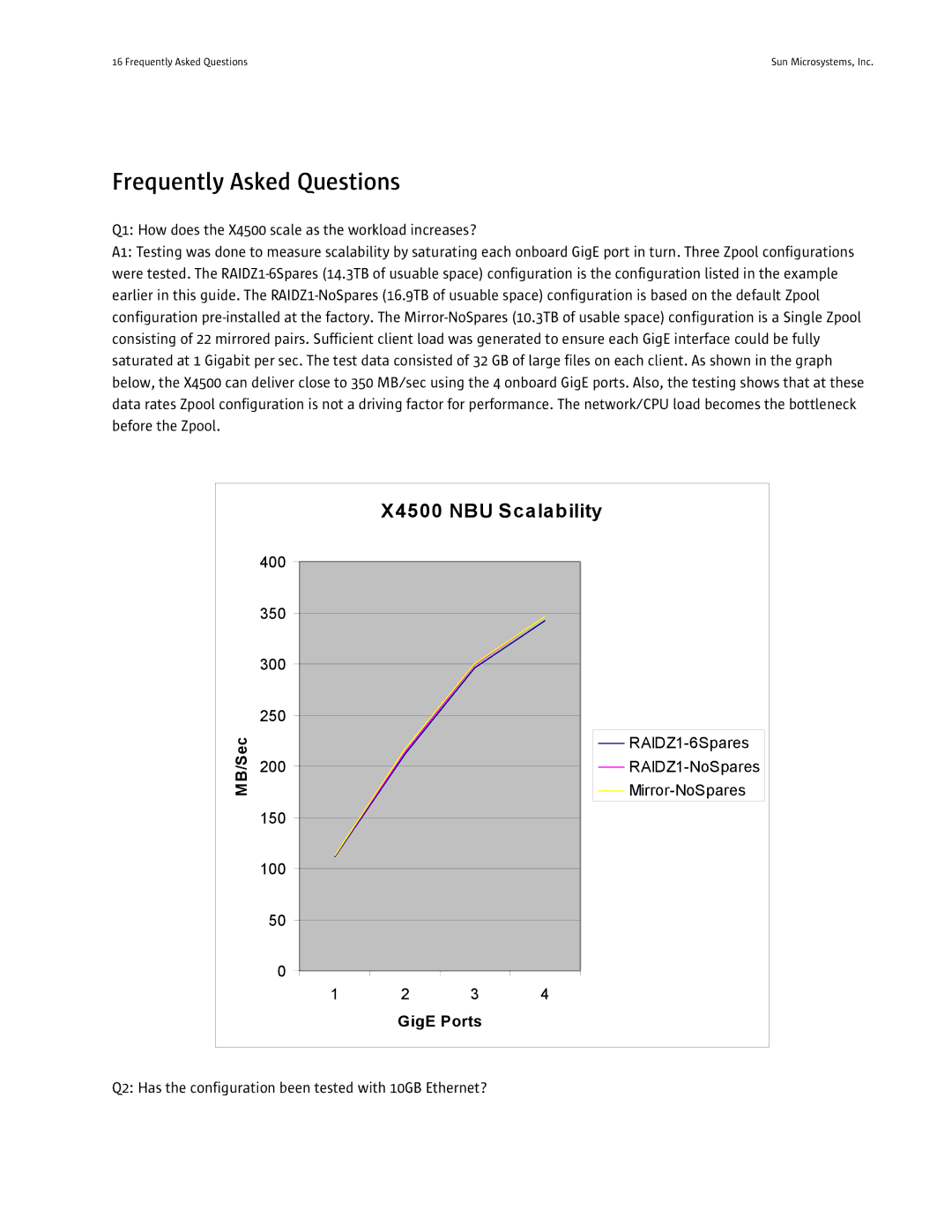
16 Frequently Asked Questions | Sun Microsystems, Inc. |
Frequently Asked Questions
Q1: How does the X4500 scale as the workload increases?
A1: Testing was done to measure scalability by saturating each onboard GigE port in turn. Three Zpool configurations were tested. The RAIDZ1-6Spares (14.3TB of usuable space) configuration is the configuration listed in the example earlier in this guide. The RAIDZ1-NoSpares (16.9TB of usuable space) configuration is based on the default Zpool configuration pre-installed at the factory. The Mirror-NoSpares (10.3TB of usable space) configuration is a Single Zpool consisting of 22 mirrored pairs. Sufficient client load was generated to ensure each GigE interface could be fully saturated at 1 Gigabit per sec. The test data consisted of 32 GB of large files on each client. As shown in the graph below, the X4500 can deliver close to 350 MB/sec using the 4 onboard GigE ports. Also, the testing shows that at these data rates Zpool configuration is not a driving factor for performance. The network/CPU load becomes the bottleneck before the Zpool.
| | X4500 NBU Scalability |
| 400 | | | |
| 350 | | | |
| 300 | | | |
| 250 | | | |
MB/Sec | | | | RAIDZ1-6Spares |
200 | | | RAIDZ1-NoSpares |
| | | Mirror-NoSpares |
| 150 | | | |
| 100 | | | |
| 50 | | | |
| 0 | | | |
| 1 | 2 | 3 | 4 |
| | GigE Ports | |
Q2: Has the configuration been tested with 10GB Ethernet?

